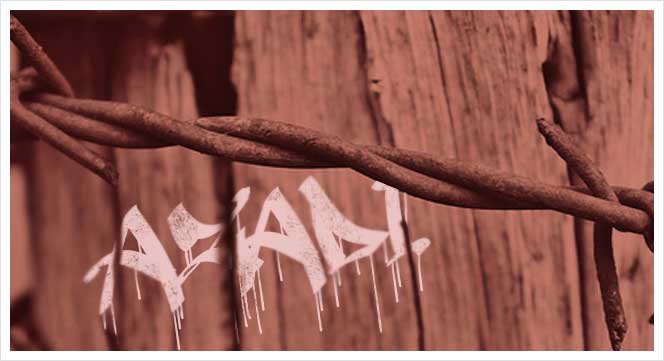Of Azadi and liberals in media

The Jawaharlal Nehru University protests divided the media. Since the day the JNUSU president, Kanhaiya Kumar, was arrested on charges of sedition for organising the February 9 event in support of 2001 Parliament attack convict, Afzal Guru, at the Varsity, the media has reported the event according to the idea of India conceptualized by some TV channels individually. Those national channels including Times Now, which were in favour of sedition charges against Kumar, were clear in their perception that he shouldn’t have been part of the assembly that raised pro-Afzal Guru slogans and that he shouldn’t have raised pro-Azadi slogans. Those, who are on the other side of the fence, say Kumar raised slogans but they were different from the way they were perceived by others.
They argued he wanted Azadi from “Punjivad, Manuvad, Brahmanwad, Sanghwad, Bhrashtachar, Bhukmari (freedom from capitalism, casteism, Brahmanism, RSS, corruption, hunger). Even a long piece was seen in national daily Hindustan Times which argued that “the “Azaadi” chant by Jawaharlal Nehru University (JNU) student leader Kanhaiya Kumar, which has become the heartbeat of a section of the youth today, is not a gift from Kashmir separatists, as is being assumed.”
The piece having headline, ‘Hum kya chahte? Azaadi! Story of slogan raised by JNU’s Kanhaiya’ said the chant originated as a feminist number against patriarchy. “It was evolved and popularised by well-known feminist Kamla Bhasin in the women’s movement all over south Asia. An early memory of dancing and chanting to the catchy beat of the “Azaadi” number dates back to 1991, at the Women’s Studies Conference in Kolkata’s Jadavpur University.” Thus, an effort was made to de-link Azadi slogan from Kashmir.
And once Kanhaiya Kumar was released from the jail, as sedition charges didn’t stand the judicial scrutiny, he raised all these slogans and also added ‘Hai haq hamara Azaadi, ham leke rahenge Azaadi’.
The way these chants were raised are quite familiar in Kashmir. The event which took place at the JNU has deep links with Kashmir. Protesters had gathered to express their support for Afzal Guru, a Kashmiri hanged in 2012 for his role in the 2001 attack on the Indian Parliament.
Though convicted in the parliament attack case by the Supreme Court, Afzal has remained popular in Kashmir and is now equated with Maqbool Bhat, founder of pro-independence Jammu Kashmir Liberation Front. Bhat was also hanged in Tihar jail on February 11, 1984, for his involvement in killing of a CID inspector. Afzal’s execution prompted a crackdown in Kashmir Valley, with Indian authorities imposing strict curfews and shutting down telecommunications for almost seven days across the Valley. Kashmiris and human rights organizations, both in India and outside, raised serious questions about the fairness of Afzal’s trial. The JNUSU students’ choice of date (Afzal’s death anniversary) for protest indicates their political stance. When Kumar was released, the prominent liberals in media carried his interview and his speech was telecast live. The only point the liberals wanted to convey was that Kumar is nationalist to the core and by Azadi he means “freedom in India, not freedom from India” which Kumar did say in his speech. After it, some top media anchors went to town on the point that Kumar’s Azadi is different from the Azadi slogans which you hear in Kashmir.
There is no dearth of people who have political positions on Kashmir. I need not name them. People do take positions and that is what democracies and free societies are all about. If Kumar and his colleagues hold a position on Kashmir and its Azadi, why should media go to town to explain that Kumar’s meaning of Azadi is different than what Azadi means in Kashmir? Let him explain what he means by Azadi without even being conscious of it that he has to elaborate and explain it. Cannot JNU students explain their position on Afzal’s hanging?
The long media focus on JNU this month was an effort by the left liberals in media to project the JNU protests as pro-Indian nationalist protest. They were more frightened with the idea that people in the JNU could have political position on Afzal Guru and Azadi.
Thus, there was this urge among left liberals in the media to explain the slogans and then issue long commentaries about Azadi and de-linking Azadi from Kashmir. There was constant effort to isolate Kumar from other students who had raised slogans. He is a good boy and he didn’t raise Azadi slogans. His Azadi slogan is different etc etc. Instead, he raised slogans of Azadi in India, not Azadi from India. All these left liberals in the media, who have covered Kashmir for long, however, are aware what Azadi means and what raising of Azadi slogan on Afzal Guru’s anniversary means.
The question is why left liberals in media tried their best to mainstremise Azadi slogan. Why they don’t accept the reality of Azadi slogan?



Leave a Reply